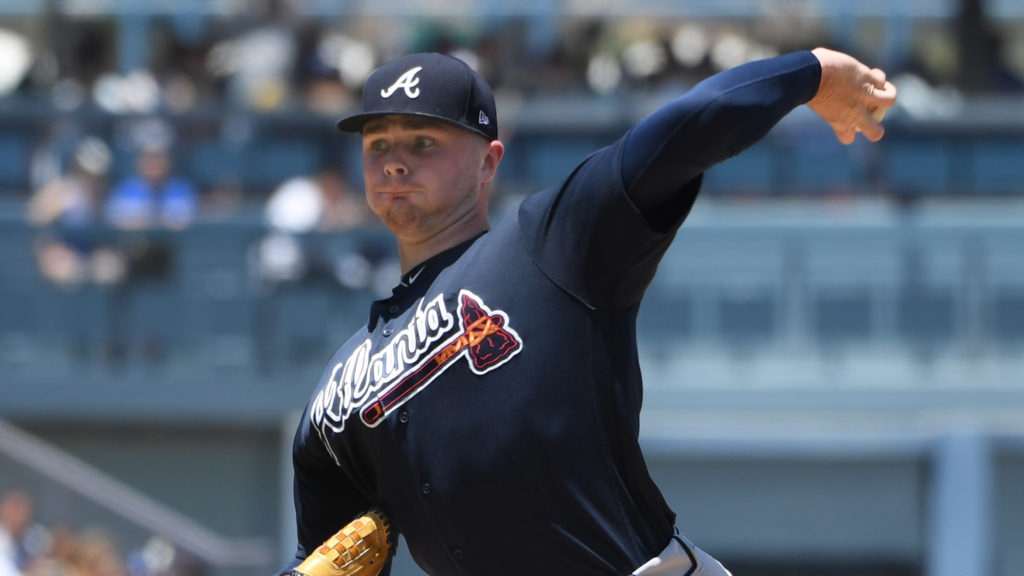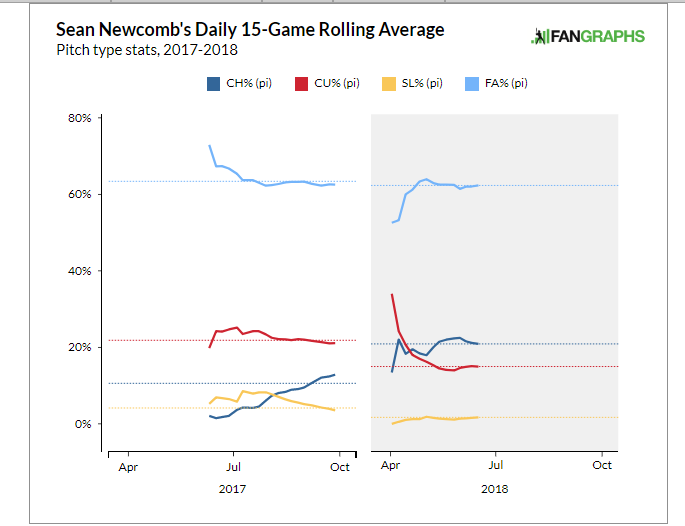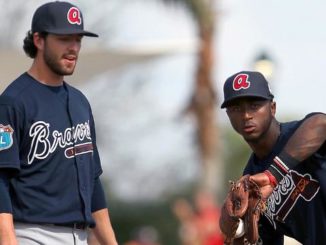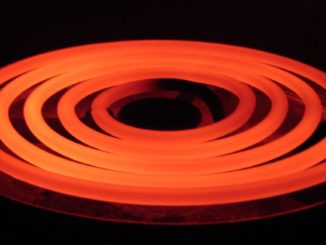
2018 has been a lovely season so far for Sean Newcomb. If you’re into traditional stats, he’s 8-2 with a 2.70 ERA. If advanced metrics are more your thing, he’s on pace for around 4 fWAR thanks to his 3.23 FIP and 24.9% K-rate. He’s making everyone happy!
A year ago, Newcomb was a source of grumbling for many Braves fans, particularly those disillusioned by the rebuild, which was running behind schedule a bit. The grumbling was reasonable. Newk went 4-9 with a 4.32 ERA (4.19 FIP), averaging less than 5 1/3 innings per start due to control issues (5.13 BB/9). So, what changed?
To begin with, he’s throwing more strikes. That’s not always a recipe for added success (strikes often turn into home runs and other dangerous things), but for a guy who struggled mightily with walks, it is. He hasn’t increased his strike rate by as much as you’d ultimately like him to (from 42.9% to 45.5%), but it’s headed in the right direction. While he’s throwing more strikes, batters are offering at strikes less this season (64.8%) than last (66.2%). They’re making worse contact in the zone (82%) than last year (84%) as well. However, hitters are making more contact overall, which tells us where the added contact is coming – on pitches outside the zone, which are pitches hitters typically do less with. That’s why Newcomb’s groundball rate is up from 43% to 50% – he has made his offspeed junk more appetizing for hitters, and they’re hitting it into the teeth of a good infield defense.
Many of those are results, though. What process has changed in Newcomb? Change is the appropriate word, as it has been Newcomb’s newfound love for an improving changeup that sparked his breakthrough. In 2017, Newcomb had a changeup, but it wasn’t particularly effective, and he didn’t throw it all that much. In 2018, it is both more effective and a much bigger part of his arsenal:
What you’re looking for is dark blue. A year ago, he hardly threw it. As he has spent more time in the big leagues, he’s thrown it more and more, and what started as an afterthought is now his #2 pitch.
Don’t get me wrong – Newk’s calling card is still his big fastball. As measured by MLB’s Statcast, based on average exit velocity, launch angle, and trajectory, batters in 2018 have an expected batting average of .200 against Newk’s heater, which leads the NL among pitchers with as many or more pitches thrown. One big reason the fastball has worked so well is that Newcomb improved his command of it. Look at the way the fastball hummed against the Padres over the weekend:
Another, however, is that changeup. As a prospect, Newcomb was expected to be primarily a fastball/breaking ball pitcher. Fangraphs’ final prospect scouting report gave his fastball and curve future grades of 60, while they projected a future changeup grade of 45. While his changeup was supposed to allow him to live in the rotation, it would be the fastball and curve that allowed him to thrive there. And that’s how he came into the majors, as you see above. However, as the changeup matured, so too did Newcomb’s pitching, and it has made him one of the NL’s very best pitchers so far in 2018.





Leave a Reply